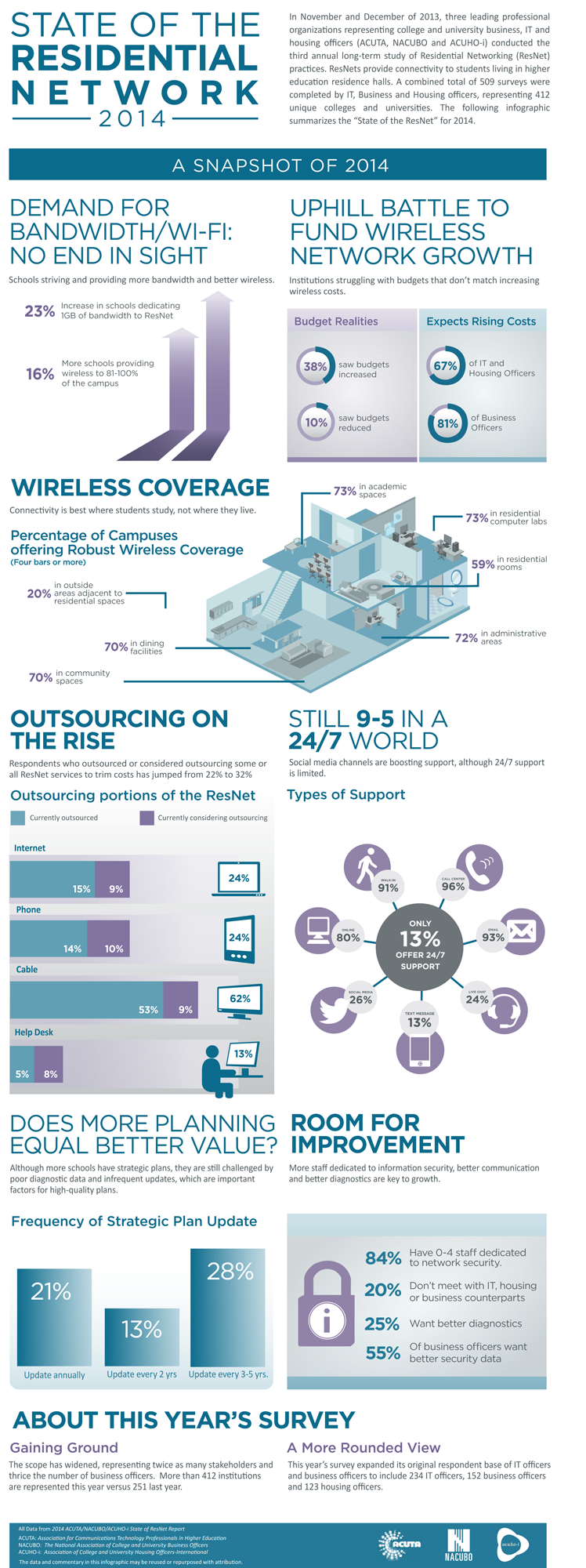Which Device Is King of Bandwidth Use on Campus Networks?
The market growth of tablets has put an extra strain on college networks, according to a new study of more than 400 higher education institutions.
The 2014 State of ResNet Report comes from a consortium of colleges and business organizations: the Association for Information Communications Technology Professionals in Higher Education (ACUTA), the National Association of College and University Business Officers (NACUBO) and the Association of College and University Housing Officers-International (ACUHO-I).
Respondents were asked to choose which devices are among the top bandwidth consumers. Tablets led the charts, with 73 percent of respondents claiming they were the biggest drainers on networks, followed by notebooks and computers at 69 percent, smartphones at 64 percent and video systems at 49 percent.
However, most of these numbers are down from the 2013 ResNet Report, a sign that Internet usage is becoming more equally distributed across several devices.
That trend is supported by a 2013 report by College Explorer that concluded the average college student owns seven Internet-connected devices.
Despite the rapid bandwidth consumption on these devices, the study shows that fewer institutions were using bandwidth-capping policies to curb usage. Only about 67 percent of colleges surveyed used these practices, down from 72 percent in 2013.
The study also reveals where students are doing most of their browsing. Students spend less time on wireless networks in their rooms than they do in other areas of campus, such as classrooms and computer labs, according to the report.
To accommodate higher demand on school networks, more colleges have been adopting faster speeds. Since the last ResNet report, the number of colleges offering speeds of 1 Gbps or more has jumped by 25 percent. Also, cellular reception at most colleges has improved as a result of equipment upgrades since the last report.
A sample of the data collected in the ResNet report is in the following infographic. For the full report, visit acuta.org.










